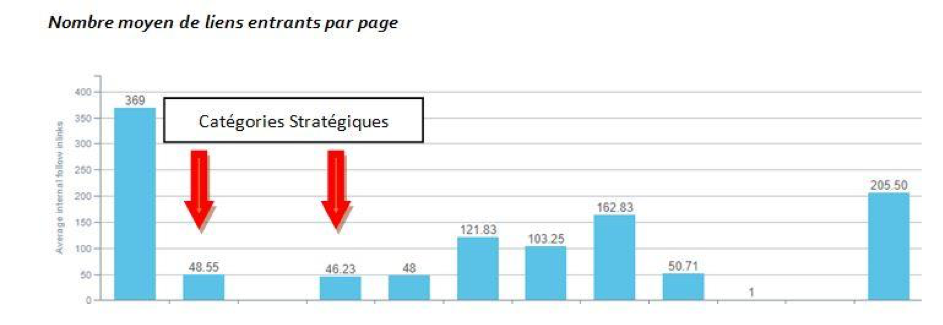Today, we're not talking about backlinks, keyword research, or even duplicate content. We're focusing on a foundational, yet often overlooked, element of SEO: internal linking.
A smart internal linking strategy is critical for crawl optimization, the discovery of new pages, and ultimately, ranking for a wider range of keywords. By the end of this case study, you'll see how we leveraged a targeted internal linking strategy to achieve significant SEO gains for an eCommerce client.
First, a quick refresher.
Internal linking is the practice of connecting pages on your own website to each other. It defines your site architecture, simplifies user navigation, and, most importantly, guides search engine bots through your content.
Crawl optimization refers to the techniques used to help search engine bots efficiently discover and access content on your site. Bots follow links to explore your website, so a logical link structure is essential for ensuring they can find, analyze, and index your most important pages.
To learn more about crawl budget, check out our guide here.
The Client's Situation: Initial KPIs
We started with an eCommerce client whose site structure was hindering their SEO performance.
Before Optimization:
- Indexed Pages: 161 out of 559 potential URLs were indexed.
- Keyword Rankings: 410 keywords in the top 100 (only 6 in the top 10).
- Total Search Volume (for top 100 keywords): 103,000
Our SEO audit, powered by the SeoSpeedup Site Audit tool, quickly revealed two major issues:
- Weak internal linking to strategic category pages.
- A significant number of orphan pages (pages with no internal links pointing to them).
 Source: SeoSpeedup Screenshot - Inbound links per page
Source: SeoSpeedup Screenshot - Inbound links per page
 Source: SeoSpeedup Screenshot - Orphan page rate
Source: SeoSpeedup Screenshot - Orphan page rate
The 3-Step Internal Linking Strategy
Our approach focused on three distinct actions to clean up the site's link equity flow and improve crawlability.
1. Reducing Redundant Internal Links
A common mistake on eCommerce sites is having multiple links from a list page (or category page) pointing to the same product page. Typically, you'll see links on:
- The product image
- The product title
- A "Learn More" or "View Product" button
The problem? Google often only considers the first link's anchor text it encounters in the HTML. If the first link is on the image (with generic alt text), you lose the semantic value of the keyword-rich product title link.
Furthermore, this practice dilutes "link equity" across unnecessary links. We streamlined the template to ensure only one, semantically rich link (the product title) pointed to each product page from the category listings.
2. Customizing the Footer
The site-wide footer contained many links that were not essential for SEO on every page (e.g., "Legal Notice," "Terms of Service"). These links were draining link equity from every single page on the site.
We implemented custom footers. The full footer with all administrative links now only appears on the homepage. For all other page templates (categories, products, etc.), we created a streamlined footer that only included links relevant to the user journey and SEO strategy.
This is a white-hat alternative to "link cloaking," a gray-hat technique that can risk penalties. By customizing the footer, we achieved the same goal—channeling link equity more effectively—without violating search engine guidelines.
3. Creating Contextual "Silo" Links
The first two steps were about pruning and consolidating link equity. The final step was about building new, valuable links to improve page discovery.
The goal was to help Google find as many relevant product listing pages as possible. We added contextual link blocks in the footer area of our category pages to create a logical linking structure, often referred to as "siloing."
Depending on the category, we developed networks of links such as:
- "Nearby Cities": For location-based service categories.
- "Related Categories": For product categories, linking to sibling or child categories.
This final action specifically highlighted our most important listing pages, aiding both the crawl bot and the discovery of new pages within the site's hierarchy.
The Results: A 3-Month Transformation
Within three months of implementing this strategy, the results were dramatic.
- Daily Crawl Rate: Increased by 62%.
Final Key Performance Indicators
- Indexed Pages: 454 out of 559 potential URLs (up from 161).
- Keyword Rankings: 1,900 keywords in the top 100 (up from 410), including 20 in the top 10 (up from 6).
- Total Search Volume (for top 100 keywords): 388,190 (up from 103,000) — a 277% increase.
Added Value and Conclusion
By fixing the site's internal linking, we enabled search engines to discover nearly 300 additional pages. This directly led to a massive expansion of our keyword footprint and a tripling of traffic value from our top keywords. We also successfully reduced the orphan page rate by 20%.
This case study demonstrates the immense power of a well-structured internal linking strategy. It's not just about navigation; it's about creating a clear roadmap for search engines to understand your site's structure, discover your content, and rank it for the terms that matter.